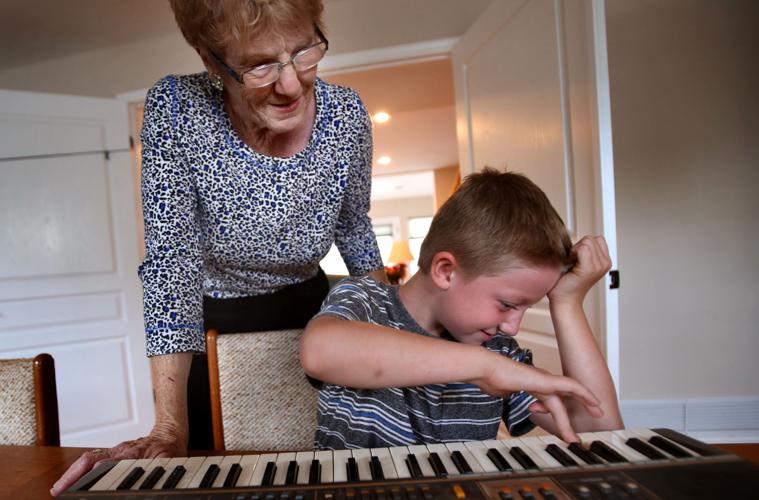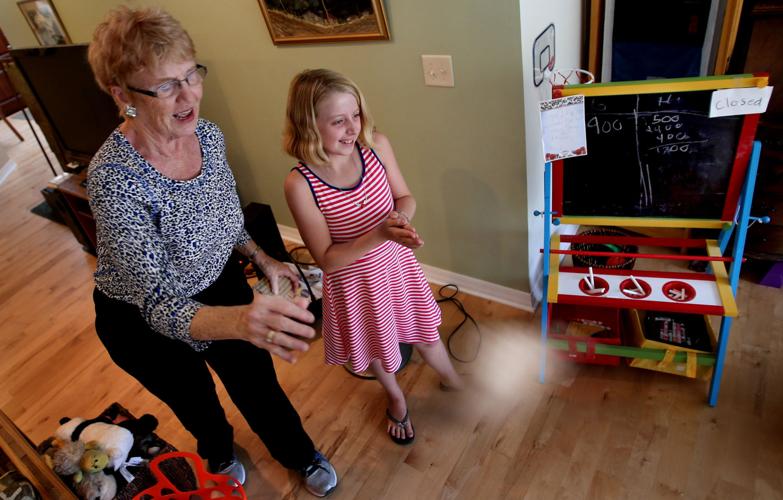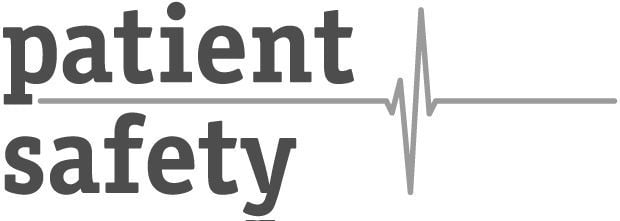Her father’s bizarre behavior while hospitalized for pneumonia earlier this year made Tucson resident Kathy Asendorf wonder if there were such a thing as sudden-onset dementia.
Normally easygoing and affable, he had become frantic and suspicious, even trying to rip out his intravenous lines.
It wasn’t dementia, which does not come on suddenly, but instead was a common — but frequently overlooked and still misunderstood — neurological condition called delirium.
Delirium, brain dysfunction that is a side effect of critical illness and its treatments, affects about one-third of patients admitted to hospital intensive care units, says Dr. Christian Bime, medical director of the ICU at Banner-University Medical Center Tucson. The Nashville-based American Delirium Society says more than 7 million hospitalized Americans suffer from delirium every year.
Patients in the ICU with untreated delirium have a two- to three-fold increased risk of dying within six months, Bime says. They also are at higher risk for ending up in long-term care and having lasting cognitive problems similar to early Alzheimer’s disease or traumatic brain injury. People who are very old or very young are at highest risk, but it can occur at any age.
“It’s an independent marker for poor outcomes. It doesn’t just ride along with being sick,” says Dr. Mindy Fain, a geriatrician who is director of the University of Arizona’s Arizona Center on Aging. “It’s independently associated with death, complications in the hospital and discharge to a nursing home — all bad outcomes.
“If someone is in the hospital and they develop delirium, it means something else is going on and that it is incumbent upon us to identify and treat it,” Fain says. “It is like a baby crying. It may be the only sign that something is wrong.”
Yet more than half of delirium in hospitals is missed, she says.
That’s not surprising because patients and family members are stressed and overwhelmed, and doctors are focused on treating the condition that led to the hospital visit, says Sarah Dowal, project director for the Boston-based Hospital Elder Life Program (HELP), a program to prevent delirium in more than 200 hospitals worldwide.
No Arizona hospitals use the HELP program, which often uses trained volunteers to gets patients oriented, moving, eating, sleeping and in therapy.
Asendorf’s 84-year-old father, who had never shown signs of cognitive decline, didn’t get anything like that.
“We were not prepared,” she says. “We would not have been as frightened or as worried for him if we had an idea this was a possibility, or if it had been noticed by someone else before us.”
ICU psychosis
Delirium — also called “ICU psychosis,” “ICU syndrome,” and “acute brain failure” — results in longer hospital stays and issues that go along with extended hospital time, like pressure ulcers, falls and urinary tract infections.
Though delirium is common in hospitals, no one knows for certain why it occurs. Theories include a deficiency of “cholinergic function,” which translates into impaired brain transmissions, or an overactive immune system that causes inflammation, triggering changes in the blood/brain barrier.
For each additional day a patient experiences delirium, the likelihood of dying increases by 10 percent, the international Illinois-based Society for Critical Care Medicine says.
The general thinking is that once a patient leaves the hospital and is no longer sick, the delirium goes away. But that’s not always the case.
“Six months out from an episode of delirium, 20 percent are still suffering from delirium. After three months a third are still delirious,” Fain says. “Think about that. That is an incredible number. What we now know is that delirium can stay kind of like forever and it sort of morphs into dementia.”
The difficulty with delirium is that medical providers must treat the condition that forced the patient to be hospitalized — and those treatments can lead to delirium, says Dr. Malcolm Dunne, a neurologist with the Carondelet Neurological Institute at St. Joseph’s Hospital in Tucson.
Walker as weapon
When she broke her hip and had replacement surgery at a Phoenix hospital 10 years ago, Rosita Hiscox was given a long list of medications — Demerol, Visteril, Zofram, Percocet and Lortab.
At the time she was 59 years old and otherwise healthy.
“The way my mom was acting was nothing like her,” Hiscox’s eldest daughter Julie Camina says. “She knew where she was but she was so combative.”
Two days after her surgery, Hiscox started screaming in the hallway, her doctor’s notes say. She picked up her walker and wielded it like a weapon. She wouldn’t stay still and was increasingly paranoid, so hospital staff restrained her.
“At times the patient seems to be extremely derailed,” one doctor’s note says.
Hiscox thought a dog was under the bed and that her brother was behind the wall. An MRI showed nothing wrong, but Hiscox’s husband and two daughters knew something was awry.
Hiscox was an extroverted and sweet-natured schoolteacher with a flair for drama and a love of music. She had never been violent or confused.
“If you didn’t know her, you might not have known it was as bad as it was,” Camina says.
The family never heard the word delirium from Hiscox’s medical providers. Camina, who is a licensed clinical social worker for a California medical provider, consulted with colleagues who said her mother was delirious and needed a consultation with a psychiatrist, and possibly an anti-psychotic medication.
Camina said the hospital advised restraining Hiscox until her delusions went away. Camina insisted on a psychiatric consultation and Hiscox ultimately received a prescription for the anti-psychotic Haldol.
Medications to treat delirium should be a last resort, says Dr. Swathy Puthalapattu, a pulmonary and critical-care physician at the Southern Arizona VA Health Care System. The drugs often have side effects, and patients need to be closely monitored.
For Hiscox it made a huge difference. Her delirium quickly subsided with no lasting effects.
When Hiscox, now 69, needed her other hip replaced this year, she told her doctor at Carondelet St. Joseph’s Hospital about how she’d reacted 10 years ago. She received a lighter, regional anesthesia and minimal medications . She showed no signs of delirium and was discharged early.
Anesthesia commonly involves the use of pain medications and anxiolytics, which have both been associated with an increased risk of delirium, Puthalpattu says.
Hiscox now enjoys playing music and doing art projects with her grandchildren, riding the bus around town, and is planning a trip to Greece.
Prevention, intervention
There are ways to prevent delirium. And if it comes on, there are ways to intervene.
The key is orienting patients to their normal lives — getting them moving and keeping them aware of day and night, and time and place, for example. During the day, families should pull up the blinds and let in light.
Helping patients to use their eyeglasses and hearing aids, and to move around as much and as early as possible, are all good, says Angela Muzzy, clinical nurse specialist in critical care services at Tucson Medical Center.
At Green Valley Hospital, chief nursing and quality officer Mona R. Smith says the staff will sometimes turns on the television news in patients’ rooms “so they stay current with what is happening.”
Smith has been a nurse for 35 years and says it’s only recently that hospitals have emphasized preventing and intervening in delirium.
“Now there’s music therapy, getting them up and moving and mobilized. We try to schedule nursing interventions to allow for the most consistent sleep patterns.”
Asendorf’s father was initially hospitalized in a room with no windows. When he moved to an area with natural light, he improved.
“The typical ICU in America has no windows. Newer hospitals try to build their ICUs differently so there is natural light coming in,” says Dr. Ole J. Thienhaus, who is head of the UA Department of Psychiatry.
“You can try and mobilize patients, sit them up and give them something to do — make puzzles, read the paper.”
Visitation policy
Family participation is critical to noticing changes in behavior, geriatricians say. Catching those changes can make a huge difference in a patient’s outcome.
Rather than the set visiting hours of old, hospitals increasingly allow families all the access they desire. Green Valley Hospital has an “open visitation policy,” including accommodations for family members who want to stay overnight.
Research has shown that if hospitals make it possible for family , friends or even hospital volunteers to sit with a patient and engage them in conversation, the likelihood of delirium goes down.
“The patients who fare best are the ones with family around,” says Bime, of Banner-University Medical Center Tucson. “They are reassured by familiar faces, just having people to recognize in the ICU environment.”
Family members can help hospital workers spot the most common, and hardest to spot, type of delirium. With “hyperactive” delirium, patients act out in ways that are clearly out of character and their condition tends to be identified sooner.
Most cases in older adults are “hypoactive delirium,” in which they appear to be quiet, “good patients,” but their family members can see a sudden personality shift.
“If I say someone is delirious you think of someone hanging off the chandelier yelling — wild behavior, disruptive, how could you miss it,” says Fain, of the UA’s Arizona Center on Aging. “But only about one-quarter of the cases is that kind of delirium. An older delirious person in the hospital will not complain. They will lie there. … They are often misdiagnosed as being depressed.”
Symptoms include confusion about time or place, mixing up days and nights, excessive drowsiness, confusing people and objects, and changes in mood.
Medical providers can too easily chalk up confusion and other symptoms to age, since delirium disproportionately affects the elderly, says Fain, who is also chief of Geriatrics, General Internal Medicine & Palliative Medicine at the UA College of Medicine in Tucson.
“Most delirium is missed,” Fain says. “The only way to really identify it is to be aware, know how common it is and to have the tools to be able to diagnose it.”
Floating stone
The key tool used to diagnose delirium in hospitals is the Confusion Assessment Method (CAM)-ICU screening.
Its steps are on laminated cards handed out to all residents at Banner Health’s two Tucson hospitals this year.
Patients are asked questions like “Will a stone float on water?” and, “Does one pound weigh more than two pounds?” In another assessment, providers spell out words and patients squeeze their hands when the letter “A” is spoken.
Muzzy says nurses in the ICU unit at her hospital use the CAM-ICU to screen patients once per shift. Family members can request the assessment for a loved one.
“I’ve been in critical care nursing for 25 years and no longer is it just OK to say, ‘Oh, we saved their life,’ and send them to a skilled facility to do the rest of their recovery,” she says. “For us now, it’s important to know they survived and they go back to work — that they go back to the life they had before their ICU stay.”
Any patient at risk
Delirium can strike any hospital patient, not just those who are older.
It could be a sign of anemia, an infection, or a new drug that isn’t working as it should.
Michael Luria’s 17-year-old daughter, Kelsey, had two episodes of delirium when she was hospitalized for complications of leukemia at Banner-Diamond Children’s hospital in 2015. Both were signals that something was wrong, he says.
The first time, her ammonia levels were dangerously high, indicating poor liver function. The second time, she was in heart failure. In both cases, Luria says, Kelsey was not herself — she was agitated and restless.
The family identified the problem right away because of her behavior changes. Kelsey died at home on April 18, 2015.
While delirium happens at any age, it can be particularly difficult to diagnose in older people because some of them have existing cognitive declines. But spotting it is important because temporary confusion can become permanent dementia without intervention.
That’s why awareness is so critical, says Bime, of Banner-University Medical Center Tucson.
“Ten years ago it wasn’t much talked about,” he says. “But it has to be a priority.”






